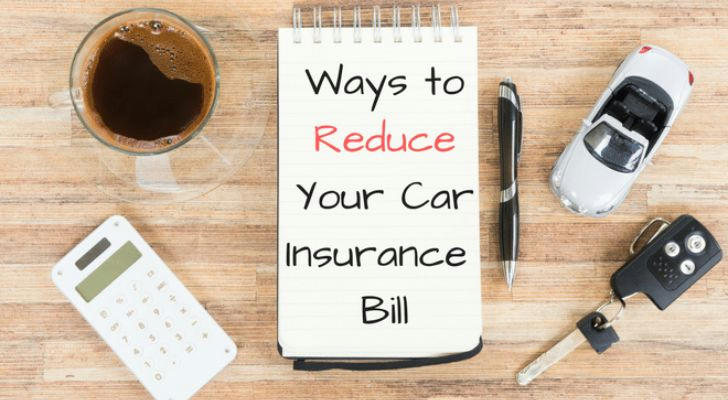Affordable Car Insurance Strategies for Low-Income Drivers: Practical Tips and State Programs
Finding affordable car insurance can feel daunting for low-income drivers. While income does not directly influence insurance rates, related factors like credit score, driving history, and location do affect premiums. This guide offers practical strategies to reduce costs, explores state assistance programs, and explains how personal elements shape insurance pricing—helping drivers secure coverage that fits their budget without compromising protection.

Understanding How Income-Related Factors Influence Car Insurance Costs
Insurance companies cannot charge based on income alone, but many financial status-related factors indirectly impact premiums:
| Factor | Impact on Premiums | Notes |
|---|---|---|
| Credit Score | Poor credit may increase premiums by ~$783 per six months compared to excellent credit | Improving credit can reduce costs by ~18% |
| Education | Higher education can reduce premiums slightly (~$24 less per 6 months for a PhD vs. no diploma) | Modest difference |
| Insurance History | No prior coverage increases premiums by ~$167 annually compared to 5 years of continuous insurance | Indicates higher risk |
| Homeownership | Often lowers rates due to perceived stability | Bundling home and auto insurance yields discounts |
| ZIP Code | Varies based on local factors like population density, accident frequency, and crime rates | Different locations lead to different rates |
These factors explain why drivers with similar incomes may face different insurance costs.
State Assistance Programs Supporting Low-Income Drivers
Several states offer programs to help low-income drivers access affordable car insurance. Here are some notable examples:
| State | Program Name | Key Features and Eligibility |
|---|---|---|
| California | Low-Cost Automobile Insurance Program (CLCA) | Lower liability limits than standard; income limits; clean driving record; age 19+; vehicle value under $25,000 |
| Hawaii | Aid to Aged, Blind, and Disabled (AABD) | Government-funded auto insurance for qualifying residents with disabilities or low income |
| New Jersey | Special Automobile Insurance Policy (SAIP) | Medical coverage after accidents for Medicaid recipients; fixed annual cost of $365 |
| Maryland | Automobile Insurance Fund | Assists residents denied coverage due to poor credit or driving record |
These programs vary but provide valuable options for those facing high standard insurance costs.
Top Car Insurance Companies and Plans for Budget-Conscious Drivers
When state programs aren’t an option, comparing quotes from insurers is crucial. Here’s a snapshot of average six-month full coverage premiums from major companies:
| Company | Avg. Cost (6 months) | Approximate Monthly Cost | Notes |
|---|---|---|---|
| USAA | $726 | $121 | Typically lowest rates for full coverage |
| GEICO | $832 | $139 | Competitive pricing |
| Nationwide | $832 | $139 | Similar to GEICO |
| State Farm | $874 | $145 | Slightly higher than GEICO/Nationwide |
| Allstate | $1,283 | $214 | Higher-end pricing |
💡 Many insurers offer payment plans (e.g., four-pay options) and discounts for safe driving, bundling, or continuous coverage. Shopping around annually maximizes savings.
Recommended Coverage Options to Balance Cost and Protection
| Coverage Type | Description | Cost Example (USAA) | When to Consider |
|---|---|---|---|
| Liability-Only | Covers bodily injury and property damage to others | ~$257 per 6 months | For older vehicles or tight budgets, but offers limited protection |
| Full Coverage | Includes liability, collision, and comprehensive | ~$835 per 6 months | Recommended if vehicle value justifies extra protection |
| Recommended Limits | At least $50,000 per person bodily injury, $100,000 total, $50,000 property damage | — | Provides adequate protection without excessive premiums |
Dropping collision/comprehensive coverage may be wise for vehicles valued under $4,000. Focus on liability and uninsured motorist coverage to guard against other drivers.
Practical Tips to Lower Your Auto Insurance Premiums
- Pay minor claims out-of-pocket: Avoid premium surcharges, e.g., an at-fault accident causing >$2,000 damage can increase premiums by 91%.
- Consider usage-based insurance programs: Examples include Progressive Snapshot and Nationwide SmartRide, offering 10-40% savings based on driving habits.
- Maintain continuous coverage: Gaps in insurance often lead to higher rates.
- Utilize discounts: Multi-policy, good driver, defensive driving courses, and good student discounts can reduce costs.
- Practice safe driving: The best way to avoid costly surcharges and maintain affordable premiums over time.
Combining these strategies helps improve affordability while preserving necessary coverage.
⭐ This comprehensive approach empowers low-income drivers to navigate insurance options, reduce costs effectively, and maintain essential protection on the road.
